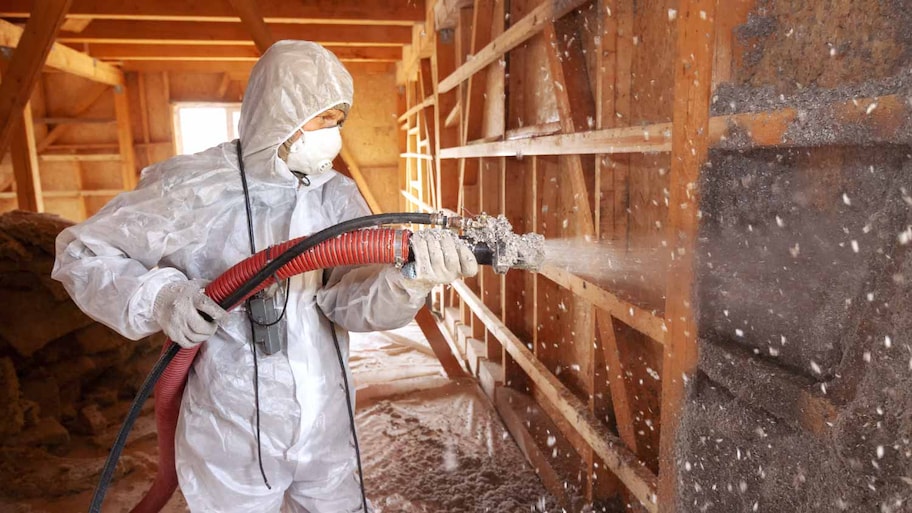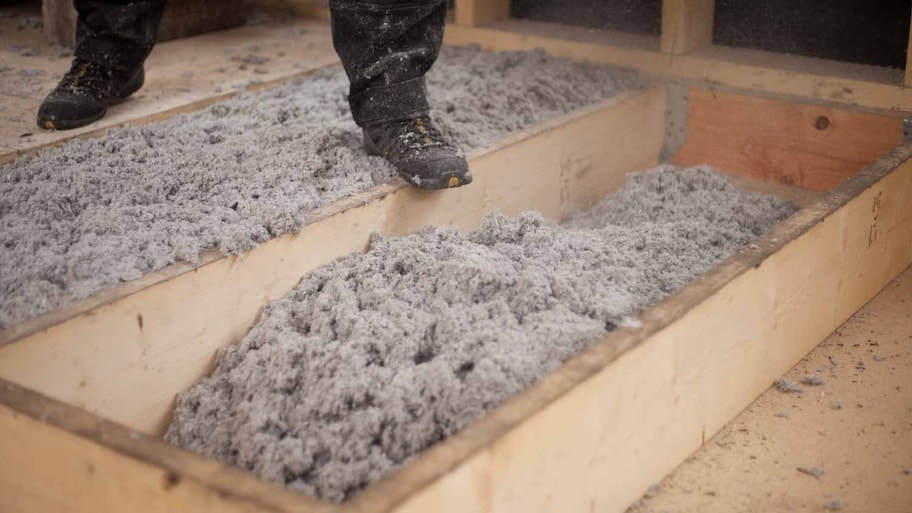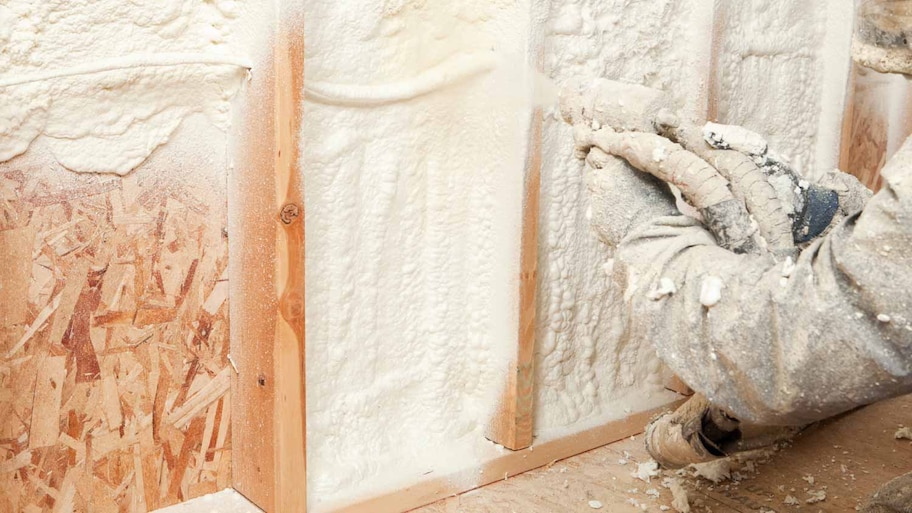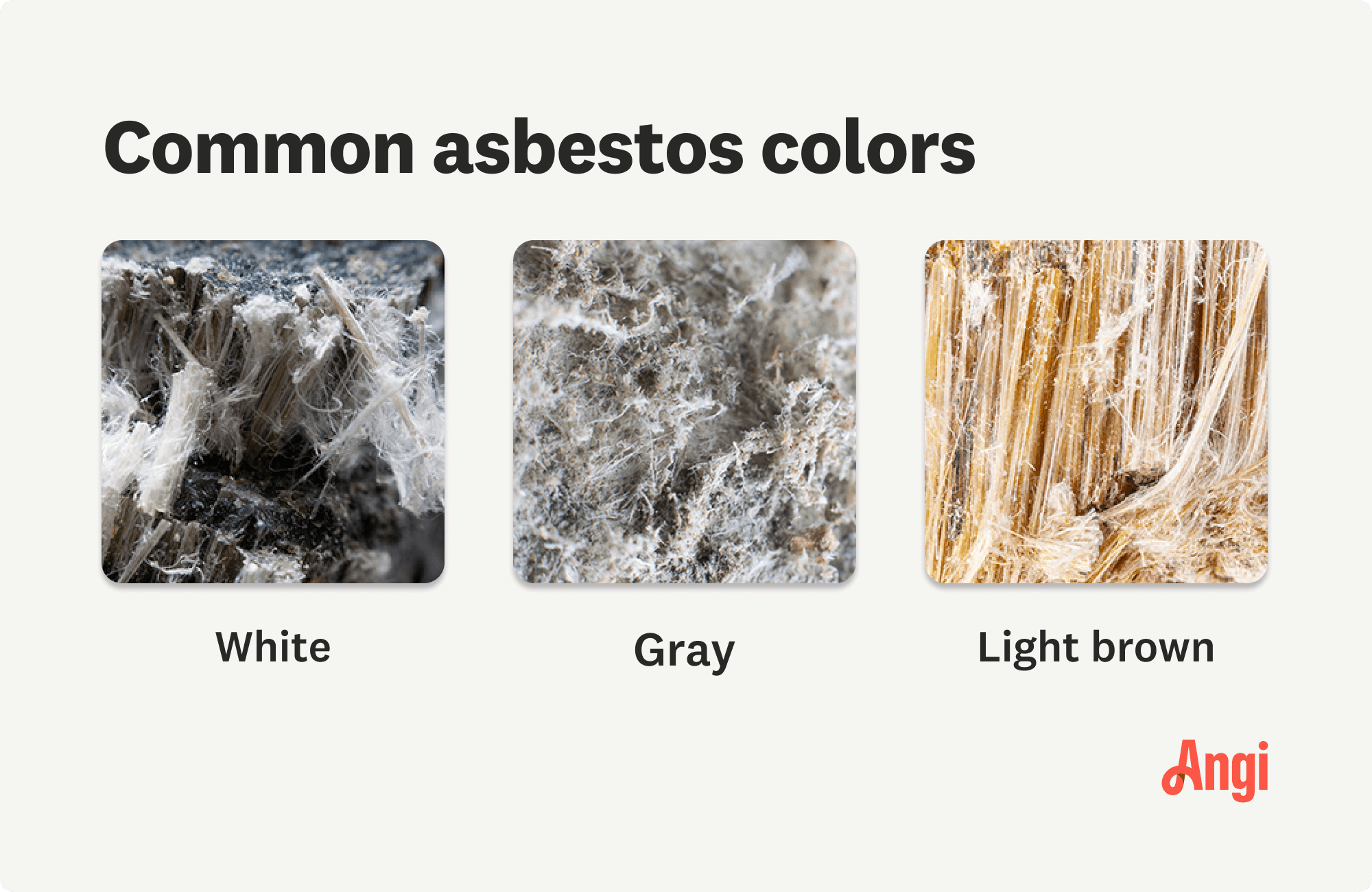What Does Asbestos Insulation Look Like?
Tread carefully when hunting for any signs of asbestos in your home


Highlights
Asbestos insulation is found in homes built between the 1900s to the 1970s.
Exposure to asbestos can lead to serious health issues, including lung cancer.
It’s best to hire a professional to handle any asbestos issues in your home.
If you own an older home, you may be worried about the types of building materials used. One material that can cause a concern for a homeowner–if their home was built before the 1970s–is asbestos insulation. Unfortunately, this type of insulation contains asbestos fibers, and asbestos exposure can cause health issues. To help you determine if there is asbestos insulation in your home, it’s important to know the visual signs. What does asbestos insulation look like? Typically, this type of insulation has a fluffy or powdery texture and can be white, gray, or light brown in color.
Keep reading to learn more about how to identify asbestos insulation in your home.
What is Asbestos Insulation?
Asbestos insulation is a type of insulation material that contains asbestos fibers. Asbestos, which is a naturally occurring mineral known for its heat resistance and durability, was widely used in various industries and construction materials due to its strong insulating properties. Asbestos insulation was commonly found in buildings, homes, ships, and industrial settings from the 1900s through the 1970s.
The danger associated with asbestos insulation stems from the microscopic fibers that make up asbestos. When disturbed or damaged, these fibers can become airborne and easily inhaled. Once inhaled, they can lodge in the lungs and other organs, causing serious health issues over time. Asbestos insulation poses a risk when disturbed during a renovation, demolition, or deterioration over time. Because of the risks, it is safer to hire a professional to identify any asbestos in your home.
The primary health risks associated with asbestos exposure include:
Asbestosis: Prolonged exposure to asbestos fibers can lead to the scarring of lung tissue, causing a chronic and progressive respiratory condition called asbestosis. This scarring can impair lung function, leading to breathing difficulties and, in severe cases, cardiac complications.
Mesothelioma: Exposure to asbestos is a significant risk factor for mesothelioma, a rare and aggressive form of cancer that affects the lining of the lungs, abdomen, or heart. Mesothelioma has a long latency period, often manifesting decades after initial exposure, and it has a poor prognosis.
Lung cancer: Asbestos exposure also increases the risk of developing lung cancer, especially among individuals who smoke or have a history of smoking. The combination of asbestos exposure and smoking significantly increases the likelihood of lung cancer.
Asbestos looks like a group of naturally occurring fibrous minerals, and it may resemble a white, gray, or bluish material.
Types of Asbestos Insulation
Asbestos insulation comes in various forms, each with distinct characteristics and applications. Identifying the specific type of asbestos insulation is crucial for safe handling and removal by certified professionals. The primary types of asbestos insulation include loose-fill, blanket, and sprayed insulation. Let’s take a closer look at each of these types:
Loose-Fill Asbestos

Loose-fill asbestos insulation was a popular choice due to its easy application and effectiveness in filling voids or spaces within buildings. This type of insulation consists of loose, fibrous asbestos material and resembles a fluffy consistency akin to fiberglass or cellulose insulation. Its flexibility made it ideal for insulating attics, wall cavities, and areas where traditional insulation methods were challenging. However, the loose nature of this material poses a significant risk if disturbed, as it can release airborne asbestos fibers, leading to potential health hazards upon inhalation.
Blanket Insulation
Blanket insulation, a prevalent form in older residential and commercial structures, resembles woven cloth or thick blankets. This type of asbestos insulation was commonly used to wrap around pipes, boilers, and ducts, providing thermal insulation. The blanket-like appearance made it relatively easy to install around irregular surfaces, contributing to its widespread usage. However, similar to loose-fill asbestos, the disturbance or deterioration of blanket insulation can release asbestos fibers into the air, necessitating careful handling and professional removal.
Sprayed-On Asbestos

Sprayed-on asbestos insulation involves the application of a mixture containing asbestos fibers and binders onto surfaces. This method was extensively used to create an insulating or fireproofing layer on ceilings, walls, and structural components in various buildings and industrial settings. The sprayed-on texture allowed for customization and adherence to different surfaces. Nevertheless, the crumbly nature of sprayed asbestos insulation makes it highly susceptible to damage, leading to the potential release of hazardous asbestos fibers into the environment.
Where to Look for Asbestos Insulation
Asbestos insulation was commonly used in construction before its health risks were widely known. It might be found in specific areas within older structures, particularly in buildings constructed before the 1980s. Common locations include attics, walls, around pipes, boilers, and heating ducts. Identifying asbestos by its location within older buildings can be an initial indicator, but professional testing is imperative for confirmation due to the potential health risks associated with asbestos exposure. Additionally, older appliances like stoves, ovens, or even hairdryers might contain asbestos insulation components, further emphasizing the need for professional inspection.
Visual Signs of Asbestos Insulation
Hiring a professional to identify asbestos insulation in your home is the safest path forward, but you can look for the following signs of asbestos insulation if you proceed with caution.
Fluffy or Powdery Texture
Asbestos insulation often exhibits a distinctive fluffy or powdery texture, resembling loose, fibrous material akin to cotton candy or shredded paper. This characteristic texture can be found in various forms, such as loose-fill insulation, blankets, or textured coatings. When touched, it might feel soft and crumble easily. It commonly appears in attics, walls, around pipes, boilers, and heating ducts. However, not all fluffy insulation contains asbestos, so professional testing is necessary for confirmation.
Varied Colors (White, Gray, Light Brown)
Asbestos insulation can come in different colors, including white, gray, or light brown hues. While these colors might indicate the presence of asbestos, it's essential to remember that other materials can have similar colors. As a result, color alone should not be the sole factor in identifying asbestos insulation. Professional inspection and testing are necessary for accurate confirmation. It's also worth noting that other insulation materials, like fiberglass or cellulose, might share similar colors, underscoring the need for a professional assessment.

Be Safe Around Asbestos
When dealing with asbestos insulation, prioritizing caution and avoiding disturbance is essential for maintaining your safety. Asbestos poses severe health risks when its fibers become airborne and are inhaled. Therefore, refraining from any attempts to disturb or remove it yourself is crucial. Instead, enlist certified professionals who specialize in asbestos handling for inspection, testing, and safe removal, if necessary.
If you must be near asbestos insulation, wear proper protective gear like a respirator, gloves, and coveralls to minimize any potential exposure. You should also ensure adequate ventilation in areas where asbestos is present and restrict access to these spaces while informing others about its presence. Remember, asbestos-related health issues often manifest after prolonged exposure, emphasizing the importance of proactive safety measures, and regular health check-ups.
Next Steps
If you identify signs of asbestos insulation in your home, the next step is to hire a professional asbestos inspector near you for a comprehensive inspection and testing. You can shop around to get a better idea of asbestos testing costs. Given the potential health risks associated with asbestos exposure, you want to avoid disturbing or attempting to handle suspected asbestos materials on your own.
Seek certified inspectors or asbestos abatement professionals experienced in handling and safely removing asbestos. They will conduct thorough testing to confirm the presence of asbestos and provide guidance on the best course of action.
The decision to replace or repair asbestos-containing materials depends on various factors, including the extent of asbestos present, its condition, and the regulations in your area. Professionals will offer recommendations based on their assessment, ensuring compliance with safety standards, and regulations.
